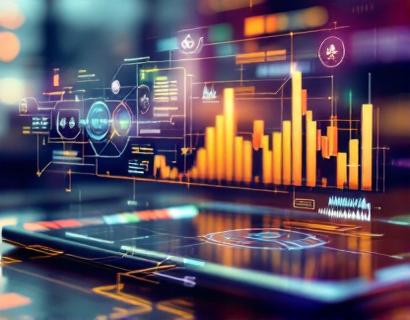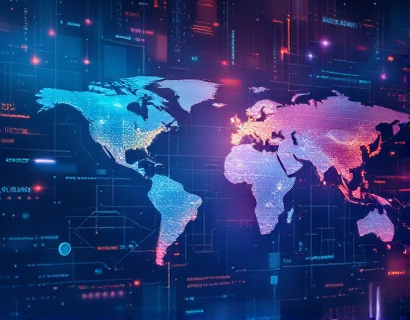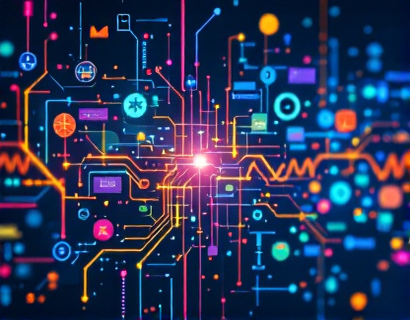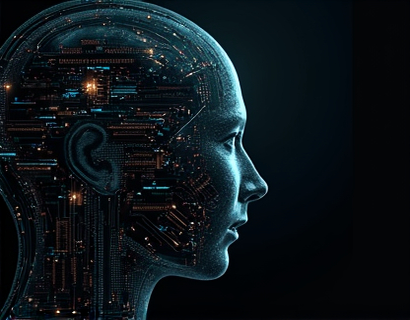Transforming Digital Experiences: The Synergy of Crypto and AI
The intersection of cryptocurrency and artificial intelligence (AI) is revolutionizing the digital landscape, offering unprecedented opportunities for enhanced user engagement and innovative tech solutions. This article delves into the latest advancements at the convergence of these two transformative technologies, providing valuable insights for tech enthusiasts and professionals alike. By exploring how crypto and AI are reshaping app interactions and driving growth in the tech sector, we aim to shed light on the future of digital experiences.
Understanding the Basics: Cryptocurrency and AI
To fully appreciate the impact of crypto and AI on digital experiences, it's essential to understand the fundamentals of both technologies. Cryptocurrency, a digital or virtual currency secured by cryptography, operates on a decentralized network known as a blockchain. This technology ensures transparency, security, and immutability, making it an attractive solution for various applications beyond finance.
Artificial intelligence, on the other hand, encompasses a range of technologies designed to simulate human intelligence in machines. These include machine learning, natural language processing, and computer vision. AI's ability to analyze vast amounts of data, learn from patterns, and make decisions autonomously has profound implications for enhancing user interactions in the digital realm.
Enhancing User Interactions with AI
The integration of AI into digital platforms has significantly improved user interactions. Chatbots powered by AI algorithms can provide instant customer support, answering queries and resolving issues in real-time. These intelligent assistants not only enhance user satisfaction but also reduce operational costs for businesses. By leveraging natural language processing, chatbots can understand and respond to user inputs in a human-like manner, creating a more seamless and personalized experience.
Personalization is another area where AI shines. Machine learning algorithms can analyze user behavior and preferences to deliver tailored content and recommendations. This level of personalization increases user engagement and loyalty, as users are more likely to interact with content that resonates with their interests. For instance, streaming services use AI to curate playlists based on viewing history, while e-commerce platforms suggest products that align with a user's shopping habits.
Cryptocurrency's Role in AI Ecosystems
The decentralized nature of cryptocurrency complements the transparency and security requirements of AI systems. Blockchain technology can facilitate secure and transparent data sharing, which is crucial for training AI models. By ensuring that data sources are trustworthy and tamper-proof, blockchain enhances the integrity of AI algorithms. This synergy is particularly valuable in industries where data privacy and security are paramount, such as healthcare and finance.
Moreover, cryptocurrency can serve as a medium of exchange within AI-driven ecosystems. Smart contracts, self-executing contracts with the terms directly written into code, can automate transactions and payments within AI applications. This reduces the need for intermediaries, lowering transaction costs and increasing efficiency. For example, in decentralized finance (DeFi) platforms, AI algorithms can optimize trading strategies while transactions are executed seamlessly through smart contracts.
Innovative Applications of Crypto and AI
The combination of crypto and AI is giving rise to innovative applications that are redefining various sectors. One notable area is supply chain management. By integrating blockchain for transparent tracking and AI for predictive analytics, companies can optimize inventory management, reduce fraud, and enhance overall efficiency. For instance, AI can predict demand patterns, while blockchain ensures that all transactions and movements are recorded and verified, providing a comprehensive view of the supply chain.
In the realm of cybersecurity, the fusion of crypto and AI is creating robust defense mechanisms. AI-powered systems can detect and respond to threats in real-time, while blockchain ensures that security logs and incident responses are immutable and verifiable. This dual approach not only enhances security but also builds trust among users who are increasingly concerned about data breaches and cyber attacks.
User Engagement through Tokenization
Tokenization, the process of converting assets into tokens on a blockchain, is another innovative application of crypto in enhancing user engagement. By tokenizing assets such as content, services, or even community governance rights, platforms can incentivize user participation and loyalty. For example, a content platform can issue tokens that reward users for creating and sharing high-quality content, fostering a vibrant and active community.
These tokens can also serve as a form of digital currency within the platform, enabling users to purchase premium features, access exclusive content, or vote on community decisions. This token-based economy not only increases user engagement but also aligns the interests of users and the platform, creating a more sustainable and user-driven ecosystem.
Challenges and Considerations
While the potential of crypto and AI to transform digital experiences is immense, there are several challenges and considerations that must be addressed. Regulatory uncertainty remains a significant hurdle, as governments worldwide are still grappling with how to regulate these emerging technologies. Compliance with data protection laws, such as the General Data Protection Regulation (GDPR), is crucial to ensure that user data is handled responsibly and ethically.
Another challenge is the technical complexity involved in integrating crypto and AI solutions. Developers need to possess a deep understanding of both technologies to create robust and secure systems. Additionally, the energy consumption associated with blockchain, particularly proof-of-work mechanisms, raises environmental concerns that need to be addressed through more sustainable consensus algorithms.
Future Prospects: The Road Ahead
Looking ahead, the convergence of crypto and AI is poised to drive further innovations and enhance user experiences in numerous ways. The development of more efficient blockchain technologies, such as layer 2 solutions and cross-chain interoperability, will reduce transaction costs and increase scalability. This will enable more widespread adoption of crypto-powered AI applications across various industries.
Furthermore, the integration of AI with other emerging technologies, such as the Internet of Things (IoT) and augmented reality (AR), will create new paradigms for user interaction. For instance, AI-driven IoT devices can provide real-time insights and automated actions, while AR applications can offer immersive experiences enhanced by AI-generated content. The synergy between crypto, AI, and these technologies will continue to push the boundaries of what is possible in the digital world.
In conclusion, the intersection of cryptocurrency and artificial intelligence is transforming digital experiences by enhancing user interactions, driving innovation, and creating new economic models. As these technologies continue to evolve, they will play an increasingly vital role in shaping the future of the tech sector. For tech enthusiasts and professionals, staying informed about these developments is essential to harness their potential and contribute to the ongoing revolution in digital experiences.










































